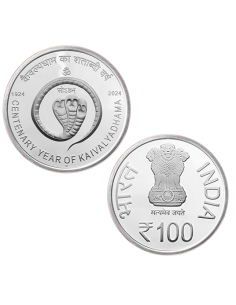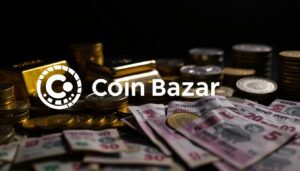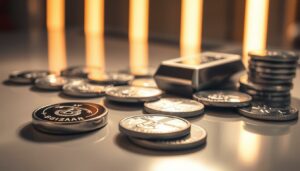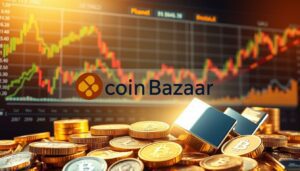Exclusive Deals & Trending Items


Precious Moments BIS Hallmarked Colorful Christmas Silver Coin Of 50 Gram in 999 Purity / Fineness by ACPL
Shop Now

Precious Moments Personalised BIS Hallmarked Happy Raksha Bandhan Silver Coin Of 100 Gram in 999 Purity / Fineness By ACPL
Shop Now

Precious Moments Color Krishna BIS Hallmarked Silver Coin Of 100 Gram in 999 Purity / Fineness by ACPL
Shop NowThe investment world is changing fast. Silver exchange-traded funds are becoming more popular. People are choosing these funds because they are easy to get into and clear to understand.
Recently, the money in silver ETFs has jumped a lot. It went from Rs2844.76 crore to Rs12,331 crore in just a few months. This shows that many investors are now picking silver ETFs over physical silver.
Exploring silver ETFs can be interesting. It’s key to know why they’re growing in popularity. Silver ETFs have clear benefits over buying physical silver, making them a good choice for investors.
Key Takeaways
- Silver ETFs have seen a significant surge in investment, with AUM growing over four-fold.
- The growth indicates a strong investor interest in silver ETFs as an alternative to physical silver.
- Silver exchange-traded funds offer accessibility and transparency, attracting investors.
- The benefits of silver ETFs are driving their popularity among investors.
- Understanding the market dynamics is crucial for investors looking to invest in silver ETFs.
The Rising Popularity of Silver ETFs in 2023
Silver ETFs are becoming more popular in 2023 for several reasons. Market trends and what investors want are key. They see Silver ETFs as a good way to diversify and grow their investments.
Recent Market Trends and Performance Data
The popularity of Silver ETFs has really taken off. The number of investors in Silver ETFs jumped by almost 215% to 4.47 lakh in October 2024. This is up from 1.42 lakh in the same month last year. Net inflows grew by 24% at Rs 643.10 crore in October 2024, showing more people trust Silver ETFs.
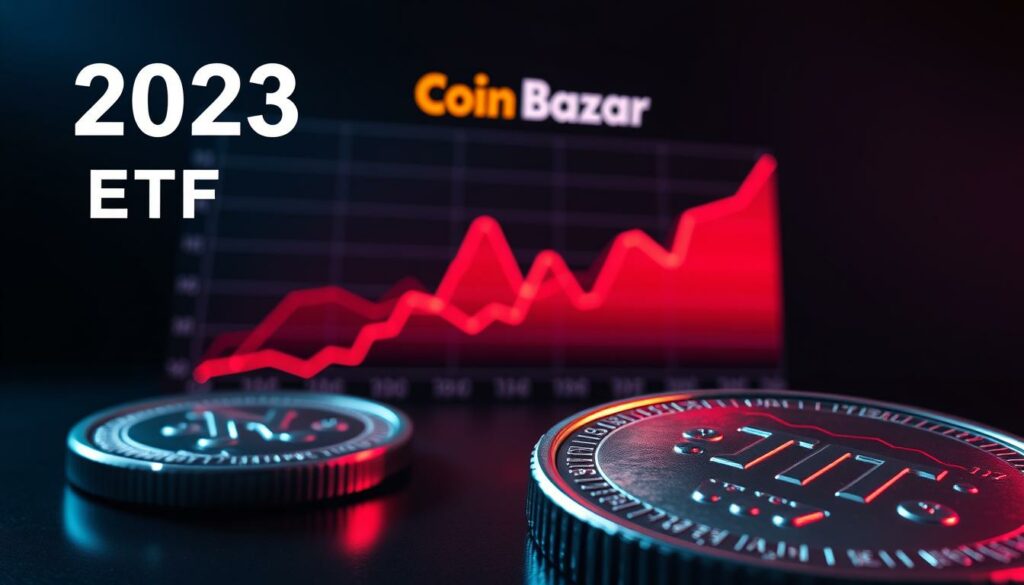

Factors Driving the Silver ETF Surge in Global Markets
Several things are making Silver ETFs more popular worldwide. The demand for silver in industries and as a protection against inflation is rising. Also, investing in Silver ETFs is easy, without the need to store physical silver. This makes them appealing to many.
Indian Investor Interest in Silver ETFs
Indian investors are also getting more interested in Silver ETFs. The numbers show a big demand for these products. As more people learn about their benefits, like being liquid and cost-effective, their popularity will likely keep growing.
By adding Silver ETFs to your portfolio, you can take advantage of this trend. They offer growth potential and diversification, making them a great choice for expanding your investments.
Understanding Silver ETFs: A Comprehensive Overview
Silver ETFs are a popular choice for investors. They offer a unique way to invest in silver. It’s important to know how they work and their benefits.
What Are Silver Exchange-Traded Funds?
Silver ETFs are traded on stock exchanges like stocks. They track the price of silver. This makes them a good choice for diversifying your investments.
How Silver ETFs Work
Silver ETFs work by holding physical silver or derivatives. This lets you invest in silver without owning it. It’s a simple way to get into the silver market.
Physical Backing Mechanisms
Most Silver ETFs hold physical silver in vaults. This link ensures the ETF’s value matches the silver’s. Keeping these vaults secure and transparent is key for investor trust.
Price Determination Factors
The price of Silver ETFs changes due to several factors. These include the silver market price, management fees, and demand. Market changes can greatly affect the ETF’s price. It’s important for investors to stay updated.
Types of Silver ETFs Available
There are many Silver ETFs to choose from. Some focus on physical silver, while others use derivatives or a mix.
“The diversity in Silver ETFs allows investors to choose products that align with their risk tolerance and investment goals.”
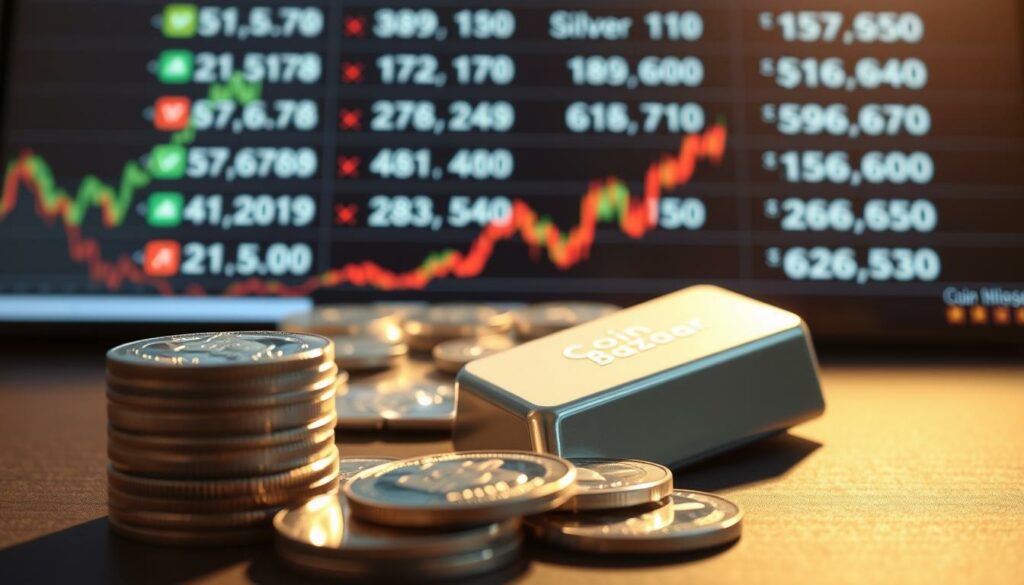

Benefits of Investing in Silver ETFs
Silver ETFs offer many benefits, including liquidity, cost-effectiveness, and diversification opportunities. They are easier to invest in than physical silver.
Liquidity and Accessibility Advantages
Silver ETFs are listed on exchanges, making them more liquid. This means investors can easily buy and sell units. It’s easier to quickly enter or exit positions.
Cost-Effectiveness Compared to Physical Silver
Investing in Silver ETFs is more cost-effective than physical silver. It saves on storage costs and reduces the risk of holding physical assets.
Portfolio Diversification Benefits
Silver ETFs help diversify investment portfolios. They reduce dependence on other asset classes.
Correlation with Other Asset Classes
Silver ETFs have a low correlation with other assets. This makes them great for diversification. It can help lower overall portfolio risk.
Volatility Reduction Potential
Adding Silver ETFs to a portfolio can reduce volatility. Silver’s stabilizing effect can smooth out returns over time.
Top Silver ETFs Available for Indian Investors
Indian investors have many top silver ETFs to choose from. The silver ETF market in India has grown a lot. Now, investors can pick from both domestic and international funds.
Domestic Silver ETF Options in India
India offers several domestic silver ETFs for easy investment in silver. Some of the most well-known include:
Nippon India Silver ETF
Nippon India Silver ETF is a top choice in India. It has shown strong performance and high returns, making it appealing to investors.
ICICI Prudential Silver ETF
ICICI Prudential Silver ETF is another strong performer. It’s a reliable way to invest in silver, with a solid track record.
Aditya Birla Sun Life Silver ETF
Aditya Birla Sun Life Silver ETF is also notable. It has impressive performance, with returns ranging from 7.57% to 32.49% over various periods.
International Silver ETFs Accessible to Indian Investors
Indian investors can also explore international silver ETFs. These funds offer exposure to global silver markets, adding diversity to portfolios.
Some international silver ETFs listed on major global exchanges are worth considering. They track silver prices, allowing investors to tap into global markets.
Performance Comparison of Leading Options
When picking a silver ETF, comparing performance is key. The top silver ETFs in India have varied results, with some offering higher returns.
Investors should look at expense ratios, tracking error, and liquidity. By comparing leading options, investors can make better choices for their portfolios.
Silver ETFs vs. Physical Silver: Which Is Right for You?
When you think about investing in silver, you have two main choices: Silver ETFs or physical silver. Each has its own good and bad points. It’s important to know these before you decide to invest.
Storage and Security Considerations
Physical silver requires you to think about where to store it safely. You might use a home safe or a bank box. This also means extra costs, like insurance to protect against theft. Silver ETFs, on the other hand, are kept in secure vaults by the ETF provider. This makes them a safe and clear way to invest in silver.
Cost Analysis: Fees, Premiums, and Expenses
Buying physical silver costs more than just the price. You also have to pay for premiums, storage, and insurance. Silver ETFs, however, are cheaper, with lower expense ratios. But, remember there are trading fees when you buy and sell ETF units.
| Cost Component | Physical Silver | Silver ETFs |
|---|---|---|
| Purchase Premium | High | Low |
| Storage and Insurance | Yes | No |
| Expense Ratio | No | Yes |
Liquidity and Resale Value Comparison
Silver ETFs are easier to buy and sell than physical silver. They trade on stock exchanges during market hours. Physical silver, while still liquid, might take longer to sell. You might also struggle to prove its authenticity.
“Silver ETFs offer a convenient and liquid way to invest in silver, making them an attractive option for investors looking to diversify their portfolios.”
Indian Market Considerations
In India, both Silver ETFs and physical silver are popular. Physical silver is traditional and widely accepted. Silver ETFs, however, are modern and easy to use. Your choice depends on your investment goals, risk tolerance, and preferences.
In conclusion, choosing between Silver ETFs and physical silver requires careful thought. Consider storage and security, costs, liquidity, and your investment goals. This way, you can make a choice that fits your needs.
Silver ETF Performance: Historical Analysis and Projections
More investors are looking at Silver ETFs. It’s important to know how they’ve done in the past and what’s expected in the future. Their growth has made them more popular.
5-Year Performance Review
In the last year, Silver ETFs did better than Gold ETFs. They saw returns of about 32.49% compared to Gold’s 28.07%. This shows more people are interested in Silver ETFs.
Key statistics from the 5-year performance review include:
- Consistent growth in assets under management
- Outperformance compared to other precious metal ETFs in certain periods
- Increased liquidity and market participation
Correlation with Economic Indicators
Silver ETFs are tied to the economy. This includes industrial demand, inflation, and currency changes. Knowing these links helps predict their future.
Because silver is used in many industries, its price is affected by economic growth.
Expert Forecasts for Silver ETF Growth
Experts think Silver ETFs will keep growing. This is because of more industrial use and its role against inflation.
“Silver ETFs are poised for significant growth as investors seek diversification and protection against economic uncertainty.”
Performance During Market Downturns
Silver ETFs have been strong during tough times. They often do better than other assets because they’re seen as safe.
Key factors influencing Silver ETF performance during downturns include:
- Safe-haven demand
- Currency fluctuations
- Industrial demand elasticity
Risk Factors to Consider When Investing in Silver ETFs
It’s key to know the risks of Silver ETFs before investing. Like any investment, Silver ETFs have risks that can affect your earnings.
Market Volatility and Price Fluctuations
Silver ETF prices can change a lot because of the global silver market’s ups and downs. Market volatility can cause big price swings. This can change the value of your investment. It’s important to be ready for possible losses when the market goes down.
Counterparty and Tracking Error Risks
Counterparty risks happen when the ETF issuer or the counterparty can’t fulfill their duties. Tracking error is when the ETF’s performance doesn’t match the actual silver price. Knowing these risks helps you make better choices.
Regulatory and Tax Considerations for Indian Investors
Indian investors need to know about the rules and taxes for Silver ETFs.
SEBI Regulations
The Securities and Exchange Board of India (SEBI) oversees Silver ETFs in India. Knowing SEBI’s rules helps ensure you follow them and avoid problems.
Tax Implications
Investors should understand the taxes on Silver ETFs. The tax rules depend on how long you hold the investment and the type of ETF.
| Risk Factor | Description | Impact on Investment |
|---|---|---|
| Market Volatility | Fluctuations in silver prices | Potential for significant losses or gains |
| Counterparty Risk | Failure of ETF issuer or counterparty | Potential loss of investment |
| Tracking Error | Deviation from actual silver price | Impact on expected returns |
How to Invest in Silver ETFs from India
Silver ETFs are a favorite among Indian investors. The process to invest in them is easy. Just follow a few simple steps.
Step-by-Step Guide to Purchasing Silver ETFs
To invest in Silver ETFs, you need to open a demat account. Then, pick a broker and make your first trade.
Opening a Demat Account
First, open a demat account. This account holds your ETFs in electronic form. To open one, you must:
- Choose a Depository Participant (DP)
- Fill out the account opening form
- Provide required documents like PAN card, Aadhaar card, and proof of address
- Sign the account opening form
Selecting a Broker
With a demat account, pick a broker for trades. Look for one with good prices, easy-to-use platforms, and excellent customer service.
Executing Your First Trade
After choosing a broker, make your first trade. Log in, find the Silver ETF you want, and place an order.
Required Documentation and Accounts
To invest in Silver ETFs, you need certain documents and accounts:
| Document/Account | Description |
|---|---|
| Demat Account | Holds your ETFs in electronic form |
| Trading Account | Used for buying and selling ETFs |
| PAN Card | Required for tax purposes |
| Aadhaar Card | Required for identity verification |
Tax Implications for Indian Investors
Understanding the tax implications of Silver ETFs is key. In India, ETF gains are taxed as capital gains. The tax rate varies based on the holding period:
- Short-term capital gains (STCG): Gains are taxed at 15% if held for less than 36 months
- Long-term capital gains (LTCG): Gains are taxed at 12.5% if held for more than 36 months
Silver ETFs as an Inflation Hedge
As inflation worries grow, more investors are looking at silver ETFs as a safeguard. You might wonder if silver ETFs really help protect your money from inflation. Silver has often done well when prices rise, making it a smart choice for those wanting to keep their investments safe.
Historical Performance During Inflationary Periods
Silver is often seen as a safe place to keep money and a shield against inflation. When inflation is high, silver prices usually go up. This makes silver ETFs a good choice for those wanting to keep their buying power strong. For example, in the 1970s, when prices were rising fast, silver’s value grew a lot.
Current Inflation Trends in India and Silver ETF Correlation
India’s inflation rates have been changing due to different economic factors. Right now, India’s inflation worries investors, making the link between inflation and silver ETFs very important. Studies show that as inflation goes up, silver ETFs often increase in value, helping investors.
Expert Opinions on Silver as an Inflation Hedge
Financial experts mostly agree that silver can be a good shield against inflation. They suggest adding silver ETFs to a mix of investments to lessen inflation risks. Some key points from experts are:
- Silver’s past performance during high inflation supports its role as a hedge.
- The current economic situation, with inflation on the rise, makes silver ETFs a good investment.
- It’s important to diversify, and silver ETFs can be a key part of a well-rounded portfolio.
Considering silver ETFs as a way to protect your investments from inflation is a good idea. By knowing how they’ve done in the past and what’s happening now, you can make smart choices for your portfolio.
Comparing Silver ETFs with Other Precious Metal ETFs
Investors looking to grow their precious metal portfolio need to understand the differences between Silver ETFs and other options. This includes Gold, Platinum, and Palladium. Knowing these differences helps make better investment choices.
Silver vs. Gold ETFs: Risk-Reward Analysis
Silver ETFs have sometimes beaten Gold ETFs in returns, with a 1-year average of 32.49% compared to Gold’s 28.07%. This is because Silver has industrial uses that can boost demand and price.
Risk-Reward Comparison: Silver ETFs are seen as riskier than Gold ETFs because of their volatility. But, this risk can also lead to higher potential returns.
Silver vs. Platinum and Palladium ETFs
Platinum and Palladium ETFs serve different investment goals, mainly due to their industrial uses, especially in cars. Silver, while also used industrially, is more like Gold as a safe-haven asset.
Performance Comparison: Palladium ETFs have seen big growth due to their use in car converters. Platinum ETFs, while stable, have had less spectacular returns.
Diversification Strategies Using Multiple Metal ETFs
Spreading your investments across Silver, Gold, Platinum, and Palladium ETFs can reduce risk. This way, you can benefit from the unique factors affecting each metal’s price.
Indian Market Availability Comparison
In India, many Gold ETFs are available, but Silver ETFs are less common but gaining popularity. Platinum and Palladium ETFs are also there, though not as traded as Gold ETFs.
| ETF Type | 1-Year Return | Volatility |
|---|---|---|
| Silver ETFs | 32.49% | High |
| Gold ETFs | 28.07% | Medium |
| Platinum ETFs | 20.15% | Medium |
| Palladium ETFs | 35.12% | High |
Advanced Silver ETF Investment Strategies
Advanced investment strategies are key to doing well in the Silver ETF market. They help you reach your investment goals. Learning these techniques can make your investment decisions smarter and improve your portfolio.
Dollar-Cost Averaging with Silver ETFs
Dollar-cost averaging is a smart way to invest. You put the same amount of money into the market at regular times, no matter what’s happening. This method can lessen the ups and downs of your Silver ETF investments. By investing regularly, you avoid the risks of trying to guess the market’s moves and might pay less over time.
Benefits of Dollar-Cost Averaging:
- Reduces the impact of market volatility
- Encourages disciplined investing
- Potentially lowers average cost per unit
Tactical Allocation Approaches
Tactical allocation means changing your investment mix based on market and economic signs. For Silver ETFs, this could mean more investment when the economy is shaky or silver demand is high. Being tactical can help you grab good opportunities and reduce risks.
Hedging Strategies Using Silver ETFs
Silver ETFs can protect your investments from inflation, market drops, or currency changes. Adding Silver ETFs to your strategy can help balance out losses in other parts of your portfolio. For example, silver often does well when inflation is high, making it a solid hedge.
“Silver has historically performed well during periods of economic stress, making it a valuable component of a hedging strategy.”
Seasonal Patterns in Silver ETF Performance
Knowing the seasonal trends in Silver ETFs can guide your investments. Silver prices often follow certain patterns throughout the year, influenced by demand and investor actions. Spotting these trends can help you adjust your strategy to take advantage of opportunities.
| Season | Typical Silver Price Trend | Investment Strategy |
|---|---|---|
| First Quarter | Moderate Increase | Accumulate Silver ETFs |
| Second Quarter | Potential Decline | Hold or Reduce Holdings |
| Third Quarter | Steady Demand | Maintain or Increase Holdings |
| Fourth Quarter | Increased Volatility | Review and Adjust Portfolio |
Using these advanced strategies can improve your Silver ETF investment journey and possibly lead to better results. It’s important to stay updated, be flexible, and regularly check your portfolio to keep it in line with your financial aims.
The Impact of Global Economic Factors on Silver ETFs
Investing in Silver ETFs means you’re affected by global economic trends. These trends shape the market and influence Silver ETF performance. A mix of factors globally impacts Silver ETFs.
Industrial Demand and Silver ETF Performance
Industrial demand drives silver prices, affecting Silver ETFs. Silver’s industrial uses in electronics and solar panels influence its price. Changes in demand can directly affect silver prices.
Higher industrial demand for silver can raise prices, boosting Silver ETF values. Lower demand can lower prices.
Currency Fluctuations and Their Effect
Currency changes, like the INR-USD exchange rate, affect Silver ETFs for Indian investors.
INR-USD Exchange Rate Impact
A weaker INR against the USD makes silver more expensive for Indians. This can lower demand for Silver ETFs. A stronger INR makes silver cheaper.
Global Currency Trends
Global currency trends influence Silver ETF prices. A strong USD can lower silver prices. A weak USD can increase them.
Geopolitical Events and Silver ETF Prices
Geopolitical events, like trade tensions, can affect silver demand. This demand can raise silver prices and impact Silver ETF values.
Understanding these factors is key for Silver ETF investors. Knowing about industrial demand, currency changes, and global events helps make better investment choices.
The Future of Silver ETFs in the Indian Investment Landscape
Emerging trends and new rules are boosting Silver ETFs in India. More investors want diverse portfolios, and Silver ETFs are a great choice.
Emerging Trends and Product Innovations
The Indian Silver ETF market is growing fast. New products and features are making Silver ETFs more appealing to many investors.
Technology is playing a big role. Online platforms for buying and selling Silver ETFs are becoming common. Also, new products are being created to meet different investor needs.
Regulatory Developments and Their Impact
New rules are important for Silver ETFs in India. Recent changes have made it easier for investors to join the market.
For example, stricter rules for ETF providers have increased transparency. This makes Silver ETFs a safer choice for investors.
Growth Projections for the Indian Silver ETF Market
The Indian Silver ETF market is expected to grow a lot. More people are learning about it, and more investors are joining.
| Year | Projected Growth Rate | Expected Assets Under Management (AUM) |
|---|---|---|
| 2024 | 15% | ₹5,000 Crores |
| 2025 | 20% | ₹6,000 Crores |
| 2026 | 25% | ₹7,500 Crores |
As the market grows, we can expect even more innovative products. Better rules will also make Silver ETFs even more attractive.
Conclusion: Is a Silver ETF Right for Your Investment Portfolio?
Silver ETFs are a modern way to invest in silver. They offer diversification and act as a hedge against inflation. It’s important to think about your portfolio needs before investing in a Silver ETF.
Consider your financial goals and how much risk you can take. This article has given you the tools to make a choice that fits your needs.
Adding Silver ETFs to your portfolio can boost your returns and lower risk. Think about the pros and cons of Silver ETFs. Also, explore the options available in the Indian market.








